Record pour une vente composée d’Arts d’Asie à Paris
Lot 23. Rhyton en jade sculpté de style archaïsant, Longwei Gong, Chine, dynastie Qing, marque Qianlong dingwei yuti, époque Qianlong, inscrit d'un poème impérial daté de l'année dingwei du règne (1787); 17 cm, 6 3/4 in. Estimate 150,000 — 200,000 EUR. Lot sold 1,968,750 EUR to an Anonymous. Photo Sotheby's
Après les ventes d’Art Impressionniste et Moderne la semaine dernière, c'est au tour de la vente consacrée aux Arts d’Asie de Sotheby's à Paris de remporter un immense succès.
Selon Philippe Delalande, directeur européen des Arts d’Asie, et Christian Bouvet, spécialiste en Arts d’Asie chez Sotheby’s France : « Les résultats éblouissants obtenus aujourd’hui à la galerie Charpentier devant un parterre d'enchérisseurs asiatiques et européens confirment la place leader de Sotheby’s dans ce domaine à Paris. Notre force est de toujours proposer à nos clients français et européens un réseau international qui permet de toucher les plus grands acheteurs mondiaux et d’obtenir des résultats spectaculaires."
Pour cette session du printemps, les catégories les plus recherchées ont été les pièces en jade d’époque Qianlong (1736-1795) comme ce rhyton de style archaïsant à décor d'animaux fabuleux qui a obtenu la plus haute enchère de la vente à 1.968.750 € (lot 23, estimation : 150.000 – 200.000 €). Acquis par un collectionneur suisse, George Estoppey, aux Etats-Unis dans les années 1930-1940 auprès de Yamanaka & co., ce rhyton a été exposé au Smithonian Institute de Washington en 1942.
Lot 23. Rhyton en jade sculpté de style archaïsant, Longwei Gong, Chine, dynastie Qing, marque Qianlong dingwei yuti, époque Qianlong, inscrit d'un poème impérial daté de l'année dingwei du règne (1787); 17 cm, 6 3/4 in. Estimate 150,000 — 200,000 EUR. Lot sold 1,968,750 EUR to an Anonymous. Photo Sotheby's
la pierre céladon et rouille à décor de volutes archaïsantes sur fond de rinceaux à l'évocation d'une queue de dragon, le col souligné d'une frise de grecques surmontant une bande de motifs géométriques archaïsants et une cordelette sculptée, le pourtour intérieur gravé d'un poème impérial et daté Qianlong dingwei yuti, inscrit sur commission de l'empereur Qianlong, l'année dingwei du règne (correspondant à 1787). Jade sculptée, socle en bois.
Note: Jade Dragon Tail Rhyton) and can be found in the Yuzhi shiji (Poetry Collection by His Majesty), Wuji (Fifth Collection) (Siku quanshu edition), 28:8a-8b. The poem can be translated as follows: Hetian jade is produced in the Jade River/ Where Mohammedan people dredge it to submit as tribute/ But where they dredge is sometimes unreachable,/ For much in this frontier land is yearly flooded/ A piece occasionally found is indeed a rare gem./ So, more valuable even than Han dynasty jade/ Not entrusted to a common carver for its new design./ The shape chosen was a dragon's tail to cut and polish,/ Since its quality is no less than that of Han dynasty vessels./ It's right high officials with tile inkstones write poems about it,/ Disliking fine wine I abstain, refusing green liquor/ But thrust blossoms in it, charming, to flutter and dance,/ Made in accord with the material, all its beauty is thus fulfilled./ Can I do as well in employing officials, with this as model! Qianlong dingwei yuti Inscription by His majesty Qianlong in the year dingwei [1787]
"Tile inkstones"—inkstones carved out of ancient, often Han era, roof tiles, which indicate that such high officials have a taste for the elegant antique. "Green liquor" translates linglu, a green-colored wine which was much prized. The emperor paraphrases a line in the Mencius: "The [sage-king] Yu disliked fine wine but loved good words."
It is rare to find rhyton cups of this exceptional quality and organic form. The carver has skilfully used the original contours of the stone to create a vessel that shows great respect for the treasured material. Shaped after ancient horn-form vessels, jade rhytons differed from everyday wares. They were held in high esteem not only for the quality of the material but also for the vessel's reference to the past.
Another Hetian jade rhyton with the same inscription in the Fitzwilliam Museum, Cambridge, is published in James Lin, 'Khotan Jades from the Collection of the Fitzwilliam Museum, Cambridge', Journal of Inner Asian Art and Archaeology, London, 2008, pp 117-122. A closely related example with an engraved poem, from the Paul-Louis Weiller collection, was sold at Drouot, Gros & Delettrez, Paris, 5th April 2011, lot 55; and another commissioned by the Qianlong emperor and inscribed with one of his poems, dated to mid-Spring of 1785, is illustrated in Rene-Yvon Lefebvre d'Argence, Chinese Jades in the Avery Brundage Collection, San Francisco, 1977, pl. LIX. See also a spinach-green jade vessel in the Palace Museum, Beijing, included in Chinese Jades Throughout the Ages. Connoisseurship of Chinese Jades, vol. 11, Hong Kong, 1996, pl. 38; and a white jade example with russet streaks, from the collection of Lady Horlick, included in the exhibition Chinese Sculpture and Works of Art, Eskenazi Ltd., New York, cat. no. 20.
See also a rhyton cup in the Victoria and Albert Museum, London, illustrated in Ming Wilson, Chinese Jades, London, 2004, pl. 35, attributed to the 13th and 14th centuries, which possibly became the prototype copied by Ming and Qing jade carvers. Wilson, ibid., p. 39, notes that there exists a group of similar cups made in subsequent periods, all of which can be traced back to the Victoria and Albert cup. Another early rhyton cup, in the Asian Art Museum, San Francisco, was included in the exhibition Chinese Jade Throughout the Ages, Victoria and Albert Museum, London, 1975, cat. no. 309, together with two further examples of cups with stepped foot, cat. nos 31- and 311.
For examples of Ming dynasty rhyton cups, see one carved with a related archaistic motif sold in these rooms, 11th June 2009, lot 260; and another, from the collection of Captain Louis Tissier, sold at Christie's Hong Kong, 30/31st October 1994, lot 458.
Autres pièces très convoitées, un cheval couché en jade céladon, dynastie Qing, qui a triplé à 408.750 € son estimation haute de 120.000 € (lot 288), et un groupe en jade blanc et rouille représentant deux cailles qui a été emporté à 348.750 € contre une estimation de 20.000/30.000 € (lot 18).

Cheval en jade céladon sculpté. Chine, dynastie Qing, XVIIe siècle. Photo Sotheby's
couché, les pattes repliées sous lui, la tête tournée vers l'arrière, la crinière et la queue finement sculptée, le jade d'une belle teinte céladon pâle avec des inclusions rouille. Jade, 18,5 cm, 7 1/4 in. Estimate 80,000 - 120,000 €. Lot sold 408,750 € (597,204 $) à un Anonyme.
The present horse has been carved in the naturalistic tradition established during the Tang period (618-907), with an emphasis on the powerful bodies and faces. Such depictions of horses reflect their association with strength and wealth in Chinese history. While no Tang jade carvings of horses have yet been excavated, an 18th century edition of the compendium on jade (Gu yu tu), attributed to Zhu Derun (1294-1365), records that the Emperor Xuanzhong (AD713-42) ordered five-coloured horses to be represented in sculpture which were in turn recreated by his jade artisan (see Jessica Rawson, Chinese Jade from the Neolithic to the Qing, London, 1995, p. 369).
For earlier carvings of reclining horses with its head similarly turned, see a larger example exquisitely modelled from dark grey jade attributed to the early Ming dynasty, in the Fitzwilliam Museum, Cambridge, published in James C. Lin, The Immortal Stone. Chinese Jades from the Neolithic period to the Twentieth Century, Cambridge, 2009, pl. 39; a small, sensitively modelled example attributed to the Jin or Yuan periods, in the British Museum, London, illustrated ibid., pl. 26:15; and another of similar size and date attribution, sold in our London rooms, 30th October 1987, lot 346.
Les arts décoratifs ont été également été très recherchés comme les cornes de rhinocéros qui continuent d’obtenir des prix forts. La vente proposait ainsi un bel ensemble de coupes libatoires dont l’une finement sculptée de personnages a été emportée à 600.750 € (lot 260, estimation : 100.000 – 150.000 €). Dans la catégorie mobilier, la surprise est venue du prix obtenu par la paire de cabinet de présentation couverte d’un décor de dragons, dynastie Qing, XIXe siècle, qui emportait la deuxième plus haute enchère de la vente à 1.296.750 € (lot 156, estimation 10.000/15.000 €). Elle provenait d’une famille belge qui avait séjourné en Chine dans les années 1920-1930.
Coupe libatoire en corne de rhinocéros sculptée, Chine, dynastie Qing, XVII-XVIIIème siècle. Photo Sotheby's
à décor d'un sage lisant assis au bord d'une rivière son serviteur non loin de lui attisant le feu dans un pôele près d'une table chargée de vases archaïsants et accessoires de lettré dans un paysage rocailleux planté d'arbres dont les troncs noueux forment une double anse, la base sculptée de vagues et rochers, marque en cachet sur le devant, la corne d'une belle teinte sombre; 14,5 cm, 5 3/4 in. Estimate 100,000 - 150,000 . Lot sold 600,750 € (877,726 $) à un Anonyme.
Notes: See a close libation cup with similar shape, double handle with landscape and water scenery carving illustrated in Jan Chapman, The Art of Rhinoceros Horn Carving in China, London, 1999, fig. 77, p. 95
Paire de cabinets de présentation en bois sculpté et placage de zitan, Chine, dynastie Qing, XIXe siècle. Photo Sotheby's
ouvrant en partie basse par deux portes surmontées de tiroirs, casiers et vantaux, l'ensemble à décor de dragons sculptés surplombé par une niche et des estrades, le fond et les côtés ornés d'un décor laqué or et noir, ferrures en émaux cloisonnés; bois; 182 x 87 x 39 cm, 71 5/8 x 34 1/4 x 15 3/8. in. Estimate 10,000-15,000 €. Lot Sold: 1,296,750 € (2,876,442 $) à un Anonyme.
Les ivoires Ming du XVIIe siècle et les objets en grès Yixing des XVIIIe et XIXe siècles ont fait l’objet d’un nouvel engouement. Des statuettes en ivoire représentant Guanyin et enfant, ont ainsi été emportées à 39.150 € et 42.750 € contre une estimation de 1.500 et 2.000 €, (lots 151 et 152). Un lot de trois théières en grès Yixing ont pulvérisé leur estimation à 54.750 € (lot 50, estimation de 4.000/6.000 €).
Guanyin et enfant en ivoire sculpté. Chine, dynastie Ming, XVIIE siècle. Photo Sotheby's
debout, un enfant dans les bras, vêtue d'une longue robe, le chapelet bouddhiste mala pendu à son poignet gauche, socle en bois ; restauration à la tête de la Guanyin, tête de l'enfant recollée; ivoire; 23,5 cm, 9 1/4 in. Estimate 1,500-2,000 €. Lot sold 39,150 €.
Statuette de Guanyin en ivoire sculpté. Chine, Epoque Ming, XVIIE siècle. Photo Sotheby's
représentée debout vêtue d'une longue robe formant d'harmonieux plis laissant apparaître la main droite, coiffée d'un haut chignon, socle en bois ; quelques manques; ivoire, 25,5 cm, 10 1/8 in.25,5 cm, 10 1/8 in. Estimate 1,200-1,800 €. Lot Sold: 42,750 €.
Trois théières en grès Yixing; Chine, dynastie Qing, XVIIIE et XIXE siècle. Photo Sotheby's
l'une hexagonale à pans coupés, la panse renflée, le bec, la prise et l'anse reliés par une monture en or ciselé représentant une tête de femme et une feuille d'acanthe, une autre hexagonale à pans coupés, la panse à décor cannelé évoquant des bambous, l'anse et le bec sculptés en forme de tronc, la prise à décor du yin et du yang, marque "Yixing zisha" à la base, la dernière de forme lobée rappelant une citrouille, la prise en forme d'animal ; égrenures. grès, 14 cm, 5 1/2 in. ; 10,5 cm, 4 1/8 in. ; 9,5 cm, 3 3/4 in. Estimate 4,000-6,000 €. Lot Sold: 54,750 €
Note : See a similar 'bamboo' teapot wit a Yixing Zisha mark illustrated in Patrice Valfré, Yixing, des théières pour l'Europe, 2000, n° 128 p. 200
L’art bouddhique reste un domaine très recherché. Une statue de Bodhisattva Avalokitesvara en bronze doré, Chine, dynastie Ming, XVIIe siècle s’est vendue 264.750 € (lot 221, estimation : 70.000/90.000 €), alors qu’un portrait sur soie de l’Arhat Bhadra, dynastie Ming, XVIe-XVIIe siècle, a été adjugé 540.750 € contre une estimation de 30.000 à 40.000 € (lot 238A). Une rare sculpture de Bodhisattva en bronze doré sino-tibétain, dynastie Qing, marque et époque Qianlong (1736-1795) a dépassé à 228.750 € son estimation haute de 200.000 € (lot 228).
Statue de bodhisattva Avalokitesvara en bronze doré. Chine, dynastie Ming XVIIE siècle. Photo Sotheby's
assis en vajrasana, sa longue robe brodée recouvrant les jambes et nouée sous la poitrine, les mains en dhyanamudra, arborant colliers et boucles d'oreille précieuses, le visage serein coiffé d'un voile recouvrant un diadème abritant une image de bouddha, socle en bois postérieur; bronze doré; 52 cm, 20 1/2 in. Estimate 70,000-90,00. Lot Sold: 264,750 € à un Anonyme
Note: Avalokitesvara is the most popular of all the bodhisattvas, appearing in myriad forms with numerous epithets : The Compassionate One, Lord Who Gazes Down, Lord of the World, and Lotus Bearer. The cult of Avalokitesvara in China is interwoven with that of Guanyin and manifestations of the bodhisattva developed independently from Tibetan Lamaist traditions. This statue of Avalokitesvara, identified by the small effigy of Amitabha on the crown, has been cast in the traditional Chinese taste, as seen in the fuller proportions of the torso and face. Compare with a close example sold in these rooms, 16 December 2011, lot 267.
Portrait de l'arhat Bhadra, encre et pigments sur soie. Chine, dynastie Ming, XVIE-XVIIE siècle. Photo Sotheby's
assis en sukhasana sur un trône rocailleux devant une cascade bouillonnante avec à sa gauche un disciple portant un lion sur ses épaules et à sa droite une cigogne, monté sur tissu; encre et pigments sur soie; 102 x 61 cm, 40 1/4 x 24 1/8 in. Estimate 30,000-40,00. Lot Sold: 540,750 €.
Note: The elegant composition of the painting continues a long established Chinese tradition of portraying the arhats in a landscape setting. And imperial marked Yongle period (1403-1424) works establish the precise source of the style of the Bhadra portrait, see Sotheby's New York, Sept. 21, 2007, lot 33. The structure of the Yongle model remains virtually unchanged, comprising a mountain setting with gnarled trees and delicate flowers, with the arhat accompanied by an attendant and mythical animals. The colour and contour of the landscape is ultimately derived from the classical blue-green style of the Tang period (618-907), and revived by early Yuan period artists (1279-1368). The tradition is recreated in Tibet and China through to the Qing dynasty (1644-1912). Later examples of the style often include a Buddhist deity from the Tibetan pantheon seated on a cloud-borne lotus above, the present work with the goddess of longevity, Ushnishavijaya, in the upper left of the painting; cf. a late 16th or early 17th century eastern Tibetan Karmapa portrait, see Marylin M. Rhie and Robert A. F. Thurman, Worlds of Transformation, New York, 1999, pl. 106. A further detail that is not seen in the Yongle paintings is the temple compound upper right, here with a figure of Padmapani at the portal, and sited on an outcrop of rock with devotees approaching. However, the painting of the arhat, the landscape and the attendant with mythical animals interprets the Yongle model with great finesse. The picture is framed using Ming period silk brocades in the Tibetan manner, but cut in the straight-sided Chinese scroll format, as opposed to the flared mounts seen on Tibetan thankas. Although incorporating elements of Tibetan traditions, the shape of the mount and the subtle interpretation of the Yongle painting style suggest a Chinese rather than Tibetan commission, and done sometime during the second half of the Ming dynasty (1368-1644).
A related work from a set of arhat paintings in the Forbidden City, is dated to the 54th year of Qianlong's reign (equivalent to AD 1789), see Lightness of Essence: Tibetan Buddhism Relics of the Palace Museum, Macao Museum of Art, Macao, 2003, pl. 51. While similar in so many respects to the present Bhadra painting, the later Qianlong work lacks subtlety in the interpretation of the Yongle style and palette. And it includes further innovation in its composition with the inclusion top right of a Tibetan monk in a posture of vigorous debate and wearing a scholar's cap.
The learned teacher is no doubt included to signify the renaissance of Indo-Tibetan Buddhist teachings in China under the guidance of Rolpai Dorje, the spiritual mentor of the Qianlong emperor. The extraordinarily close similarities in composition, detail and measurements of canvas between the present 16th/17th century Bhadra and the Qianlong work suggests that they may both have been copied from the same model: most probably an important Yongle painting that was well known to the artists' studios and patrons. According to ancient Chinese principles the copying of important earlier works is meritorious. The Qianlong commission to copy the early Ming work emphasizes the high regard in which the original must have been held, and highlights the prestige of the present 16th/17th century version.
Rare sculpture de Bodhisattva en bronze doré,Sino-tibétain, dynastie Qing, marque et époque Qianlong (1736-1795). Photo Sotheby's
assis en dhyanasana sur une base lotiforme, la main droite dressée en abhayamudra, vêtu d'une longue robe aux bords finement ciselés, arborant des colliers précieux, la chevelure tombant en longues mèches sur ses épaules et coiffée en un haut chignon retenu par un diadème, le visage serein encadré de longues boucles d'oreille, marque à sept caractères Qianlong dans un cartouche rectangulaire gravée à la base ; la base non scellée, restaurations au diadème, vase manquant: bronze doré; 39 cm, 15 3/8 in. Estimate 150,000-200,000. Lot sold 228,750 EUR
Note: This impressive Bodhisattva figure belongs to a well-known series of gilt-bronze sculptures made during the reign of the Qianlong Emperor (1736-1795) as gifts for the sixtieth, seventieth or eightieth birthday of his mother Xiaoshen (1690-1777) who was a devout Buddhist. Unfortunately it is not possible to determine the dates of these gifts more precisely. Chinese anals just refer to large numbers of Buddhas and Amitayus Buddhas as gifts for her sixtieth and seventieth birthday. For its magnificent large size the figure represents a major commission and technical accomplishment instigated and sponsored by Imperial patronage.
Compare a figure of seated Amitayus from the Rijksmuseum of Amsterdam about the same dimensions illustrated in Ulrich von Schroeber, Indo-Tibetan Bronzes, Hong Kong, 1981, p. 546, pl. 155B. See also two richly gilded deaity figures published in Zhongguo Zang quan fojiao diaosu quanji, vol. 2, Beijing, 2002, pls. 208 and 209.
Compare also with same dimensions Amitayus bronze figures from the same serie with sevencharacter Qianlong marks illustrated in the catalogue of the exhibition Splendors of China's Forbidden City, The Glorious Reign of Emperor Qianlong, Dallas Museum, 2004-2005, pp. 140 et 141.
See also three bronze-figures with seven-characters Qianlong marks of smaller dimensions sold at Christie's Paris, 8 June 2010, lots 311, 312 and 313.
Autre belle surprise de la vente, celle du prix obtenu par un rare grand vase bouteille en porcelaine de la famille Rose, Chine, dynastie Qing, XVIIIe siècle qui a multiplié par dix à 780.750 € l’estimation haute de 70.000 € (lot 86).
Rare grand vase bouteille en porcelaine de la famille rose. Chine, Dynastie Qing, XVIIIE siècle.
la panse piriforme surmontée d'un long col tubulaire reposant sur un pied droit, le pourtour décoré des dix-huit lohans dont Subindha au-dessus de flots tumultueux tenant un rouleau à la main, Pindola monté sur un tigre féroce son anneau magique à la main, Vijraputra jouant avec son lionceau et Kanaka élevant son bol vers le ciel dans un paysage agrémenté de rocher, pin et lingzhi, au-dessus dans les nuages sont figurés entre autres Nagasena tenant son vase et Nantimitolo offrant la perle enflammée à un dragon rouge et or émergeant de la brume, peint sur le col du vase, un stupa apparaissant dans le lointain parmi des chauves-souris en vol, un numéro d'inventaire japonais peint en noir à la base et étiquette d'inventaire aux armes des Wendel de Lorraine et des Montiers-Mérinville ; fêle à la glaçure, la bordure du col légèrement rodée; porcelaine, 70 cm, 27 5/8 in. Estimate 50,000-70,00 €. Lot sold 780,750 €
The present vase stands out for its painterly design, fine and well preserved enamelling and its magnificent large size. It is the work of potters employed at the Imperial kilns at Jingdezhen, Jiangxi province, where vessels of such exceptional workmanship were made during the Qing dynasty. The subject matter of the 18 luohan is one that would have been specially commissioned by a devout Buddhist or to celebrate an auspicious occasion such as a wedding or birthday. The design, painted against a white ground, is after scroll paintings where the motif is gradually revealed as the work is unfold. By turning the vase, the viewer is introduced to the eighteen holy men, or sages, who have realized the Buddhist doctrine and have attained enlightenment.
Generally depicted as elderly monks with shaved heads and loose robes, each lohan is identifiable by his individual attribute which he often carries or holds in his hand. Although occasionally worshipped as individuals, more frequently lohan were venerated in groups for their collective power.
Although no other similar example appears to be recorded, the painting style is comparable to that seen on a Qianlong lantern-form vase with the design of eight immortals, a similarly auspicious and celebratory theme used for birthdays, illustrated in Kangxi. Yogzheng. Qianlong. Qing Porcelain from the Palace Museum Collection, Hong Kong, 1989, pl. 31; and on another vase in the Palace Museum also decorated with the eight immortals published in Zhongguo taoci quanji, vol. 15, Shanghai, 2000, pl. 35. See also a smaller vase of upright shape, painted with the three Daoist star gods accompanied by several children, the figures dressed in beautifully coloured robes on a white ground, from the collection of H.M. Knight, sold in our London rooms, 12th May 1970, lot 124.
It is also worth comparing another large vase bearing a Daoist scene of immortals with Xiwangmu, from the collections of Viceroy Li Hongzhang, Alfred Trepnell and General Brayton Ives and illustrated in Edgar Gorer and J.F. Blacker, Chinese Porcelain and Hardstones, vol. II, London, 1911, pl. 215, sold at Christie's New York, 19th September 1996, lot 321, attributed to the Yongzheng and early Qianlong period.

/https%3A%2F%2Fprofilepics.canalblog.com%2Fprofilepics%2F1%2F0%2F100183.jpg)
/https%3A%2F%2Fstorage.canalblog.com%2F03%2F02%2F119589%2F96711876_o.jpg)
/https%3A%2F%2Fstorage.canalblog.com%2F11%2F31%2F119589%2F94773502_o.jpg)
/https%3A%2F%2Fstorage.canalblog.com%2F20%2F83%2F119589%2F94772815_o.jpg)
/https%3A%2F%2Fstorage.canalblog.com%2F26%2F72%2F119589%2F75604929_o.jpg)
/https%3A%2F%2Fstorage.canalblog.com%2F59%2F60%2F119589%2F26458628_o.jpg)
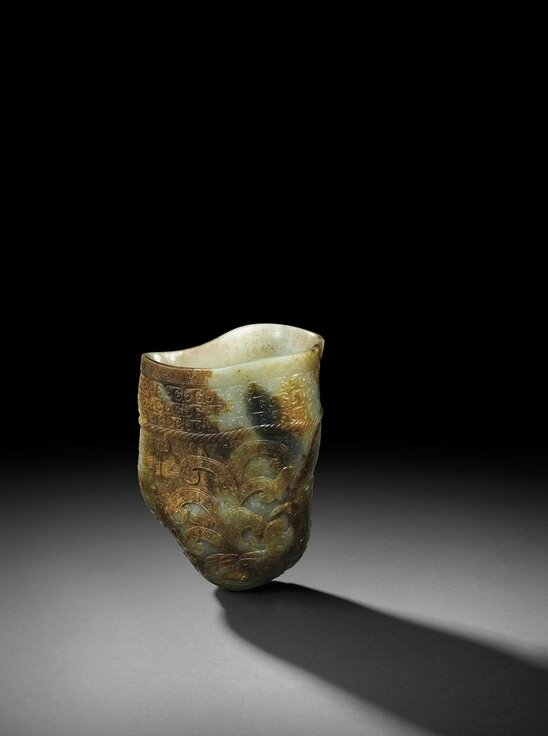
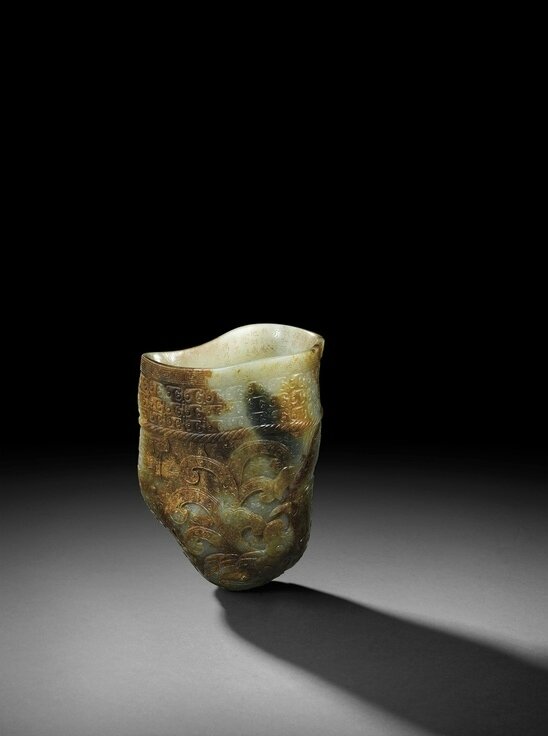

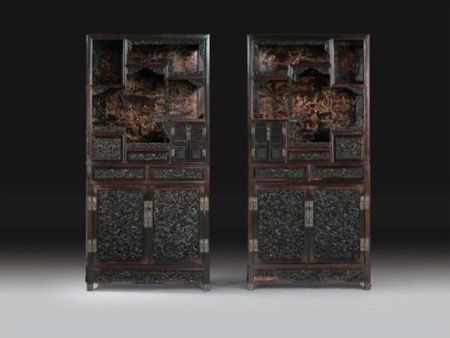


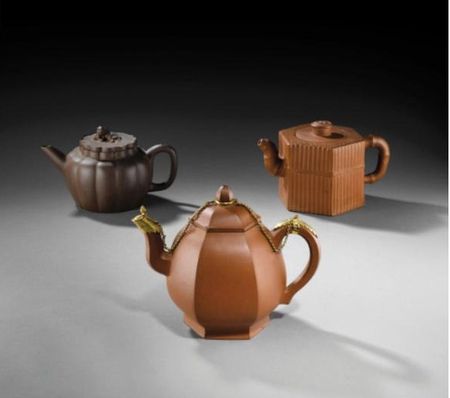

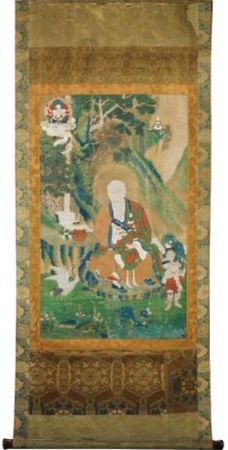




/http%3A%2F%2Fstorage.canalblog.com%2F87%2F14%2F119589%2F96516259_o.jpg)
/http%3A%2F%2Fstorage.canalblog.com%2F64%2F74%2F119589%2F75058468_o.jpg)
/http%3A%2F%2Fstorage.canalblog.com%2F04%2F39%2F119589%2F74963459_o.jpg)
/http%3A%2F%2Fstorage.canalblog.com%2F46%2F65%2F119589%2F74511647_o.jpg)